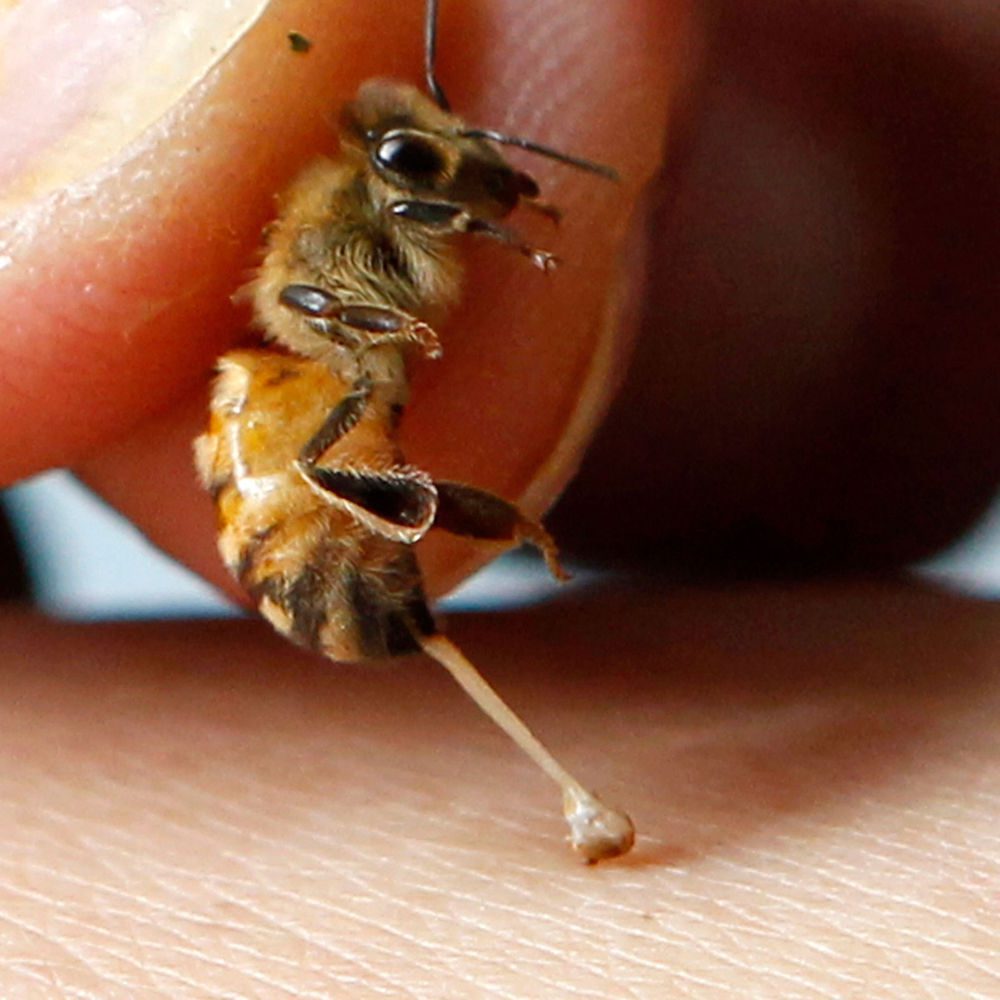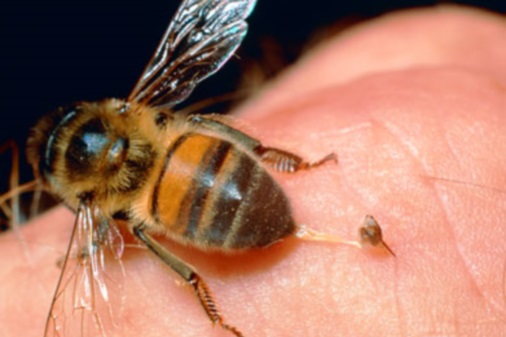We all know that bee venom comes from the sting, and some people use it for treatment, and some people are allergic to the sting, and it may lead to death.

But, have you ever wondered what is bee venom made of?
One of the reasons why not everyone keeps bees are because honey-bee venom has evolved over millions of years into an efficient defense mechanism, but suffice it to say that it is a transparent, odorless liquid with a chemistry that is quite complex and contains around 88% water. At least 18 pharmacologically active components, including different enzymes, peptides, and amines, have been identified. Melittin, one of the tiny proteins, makes up roughly 50% of the dry weight of the venom. This hydrolyzes cell membranes and alters permeability, which is mostly what causes the pain. However, other elements work in tandem with it, such as hyaluronidase, which modifies cell membranes and facilitates the venom’s easy dissemination. When bee stings happen to hypersensitive people, other ingredients can make sting victims go into anaphylactic shock, which is the main reason for bee sting fatalities. A single sting can most frequently result in death, which typically happens an hour after the sting.
Because of this, the majority of prudent beekeepers bring an EpiPen to the hive. This gadget can automatically inject the drug epinephrine into your body, saving your life. It is worthwhile to talk to your doctor about this aspect of beekeeping so that, if necessary, you may get a prescription for the EpiPen. You can get a regular epinephrine-containing syringe in place of the pricey auto-injector, but you’ll have to inject yourself with it — that is, shove the needle in!

Large populations of bees can result in venom poisoning, which can be fatal to non-hypersensitive people. 500–1500 stings are thought to be necessary for this to happen.
Using venom for humans
According to apitherapists, the following conditions can be treated with bee venom:
- chronic wounds like tendinitis and bursitis.
- Hypertension.
- Asthma.
- removing scar tissue.
- a few skin problems, including eczema.
- loss of hearing.
- perimenopause syndrome (PMS).

Although there is a value in the substance, it is worthwhile to consider it as a source of income even though there is no convincing scientific evidence that bee venom is useful for any of these conditions. Specialized equipment is required for its collection, however, the majority of it may be acquired from reliable bee supply providers.
All of the products that bees can produce—honey, honeydew, pollen, propolis, venom, and silk—can be profitable for beekeepers to sell. With practice, you’ll be able to pick just what you want your bees to generate for you and discover the most effective techniques for encouraging them to produce an excess.
This was our article for today. do not forget to read What are the Benefits of Bee Sting and Venom?